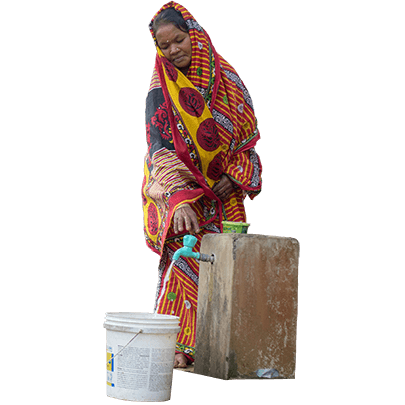Community-Owned Social and Agroforestry Phase II
Phase II of the “Community-Owned Social and Agroforestry” project will plant productive fruit, fodder and fuel bearing species in about 135 acres of catchment area of groundwater sources to ensure water source sustainability while improving livelihoods through effective management of natural resources. Water conservation measures will be undertaken in the recharge zone, whereas in the discharge zone, the focus will be on water harvesting structures. This phase will expand the efforts to five more villages directly benefiting 405 households in Thuamul Rampur block in Odisha’s Kalahandi district.
The project aims to plant productive fruit, fodder and fuel bearing species in 135 acres in the watershed area of the groundwater sources to realise the dual benefits of water source sustainability while improving natural resources based livelihoods.

REACH
37,800 trees in 135 acres
REGION
Kalahandi in Odisha
PROJECT STATUS
Completed
TIMELINE
November 2019 to March 2021
BUDGET
₹47.48 lakh
PARTNERS
InterGlobe Foundation
ACTIVITIES
- Conducting baseline surveys to ascertain the socio-economic status in five villages
- Sensitising the communities on the importance of Natural Resource Management (NRM)
- Identifying village volunteers to anchor the work within the community
- Mobilising community contribution for plantation and land development activities
- Measuring spring discharge data and the quality of water
- Setting up plant nurseries in the villages with the help of the community/self help groups
- Conducting hydrogeology surveys to study the movement of groundwater both inside the watershed and nearby areas
- Identifying and undertaking soil protection and moisture conservation measures wherever required
- Clearing sites with community contributions as per the agreement with the respective village committees
- Undertaking social and agroforestry work in the catchment area/watershed area
- Mobilising the community to practice intercropping in the private lands, and growing oil seeds and varieties of pulses
- Establishing a weather station for the monitoring of local conditions and determining the outcomes of land development activities on the recharge of local aquifers
- Capacity building and hand-holding of the community members, village committees and staff engaged in project implementation
- GIS mapping of land and plantation activity
- Collecting and analysing data on groundwater, crop and plantation survival
RESULTS
- Strengthened community institutions to manage the development activities undertaken in their respective habitations.
- Generated a profit of ₹1.9 lakh from nursery activities for the SHGs in five villages.
- Trained Village Development Committee and SHG members and farmers on participatory management of the natural resources.
- Planted social forestry plantations consisting of fast-growing varieties on 82 acres across the seven habitations.
- Converted a total of 110 acres of privately owned land was to horticulture plots planted with mango and cashew.
- Introduced pulses and cereals grown as part of the intercropping practices in the horticulture plots.
- Carried out springsheds monitoring activities and interventions in association with VDCs and village cadres.
- Increased discharge of springs acting as a source for piped water supply, due to recharge interventions along the catchments of the springs, despite lower rainfall in comparison to the previous years.
- Undertook recharge and soil conservation activities on the hills of both the habitations to reduce rainwater runoffs, facilitate percolation and protect erosion of topsoil to the cultivable plots downhill.
- Installed an automatic micro weather station to determine the outcomes of the various land development activities on the recharge of local aquifers.
- The project helped in generating livelihoods and ₹ 11.80 lakh income directly benefiting 405 households for the community during COVID-19.